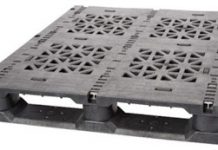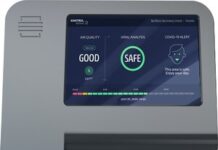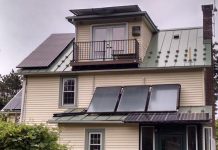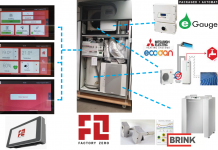As I mentioned in a previous post (and also a purchase of LSGP.ob), I have become very interested in the potential investment opportunities in companies that are involved in the conversion of typical halogen and incandescent lighting over to solid state lighting (i.e. LED.) With that said, I wanted to pull back the curtain to show you my process and thinking when I enter a new investment space. The potential returns for the companies in this space can be quite large over the next 10 years. Many municipalities and large corporations are looking at the potential savings that can be had in the conversion to solid-state lighting (or also called LED lighting.) The return on investment for these municipalities and business can payoff very quickly. From a recent article in LED Magazine, they list several case studies on the ROI.
In 2001, the City of Portland replaced 6,900 red and 6,400 green incandescent traffic lights with LEDs. The project resulted in annual energy and maintenance savings of $400,000, as well as 1,400 hours of maintenance staff time, and a net payback in less than three years. [ more ]
An April 2004 Traffic Light study conducted by the California Energy Commission found some interesting details. Here is a highlight of some key data points:
- 65 percent of the traffic signal modules in California are LEDs, with the red and green being the predominant types, constituting nearly 80 percent of the LED module types installed.
- 76 percent of those surveyed indicated that their LED traffic signals have reduced utility bills.
- 56 percent of those surveyed reported that the LED modules have reduced their maintenance cost.
There are a large number of municipalities that have already converted many of their traffic lights and are seeing similar benefits. The survey above points out some next steps that will enable these cities to complete the conversion for traffic lights. But with 80% of all the LED’s installed being just in traffic lights, this shows a tremendous growth opportunity for additional replacements in signage lighting, street lighting, and other lighting needs where they can see similar efficiencies. As an aside, this survey also reports that battery backup systems are also high on the acquisition list, which is good news for several companies in this sector as well. Here is a link to the PDF version of the report. [ more ] A quick google search for public works conversion to LED street lights nets you over 3 million results. There is definitely some momentum here. With the signing of the Energy Policy Act of 2005, the potential impact of LED lighting is increasingly gaining national and global attention. A 2001 Department of Energy study estimates a cumulative savings of $98 billion by 2020 once LED lighting reaches the performance crossover with conventional sources. Part of the new Energy Policy act is an investment in Solid-State Lighting Research. The act allocates up to $50 million annually for the Next Generation Lighting Initiative (NGLI). The first RFP’s are already starting to hit the contractors for this work.
Energy Department Announces $4 Million Solicitation for Solid-State Lighting Research August 29, 2005—The DoE announced a $4 million solicitation for research into solid-state lighting (SSL) that has the potential to create light with virtually no heat and double the efficiency of general lighting systems, saving energy costs for consumers and reducing lighting’s environmental impact. Core SSL technologies include light-emitting diodes (LEDs), organic light-emitting diodes (OLEDs) and light-emitting polymers.
“Solid-state lighting advances have the potential to greatly reduce energy consumption in U.S. buildings,” said Secretary of Energy Samuel W. Bodman. “This research supports the President’s commitment to increase energy efficiency and conservation, key aspects of America’s overall energy strategy.” [ more ]
Typically my first step in conducting my stock research is to find all the companies involved in this space. Then look for the companies that are the leaders and the ones getting the contracts. Typically you will find the 800 pound gorillas in the sector (i.e. Siemens, Philips, etc.) very quickly. The key is to find the smaller companies that provide the value added services, fill a niche, or provide parts and services as a sub-contractor to the larger companies. This is where you best investment opportunities will be found. Here is a listing of several companies in this space. I have also added all of these to the stock watchlist as well. Carmanah Technologies (CMH.V) — a Canadian company that specializes in combining solar power with LED lights which are very useful for emergency and outdoor uses. Color Kinetics. Inc. (CLRK) — An LED lighting systems company that specializes in large scale installations. Cree Inc. (CREE) — A semiconductor company that produces LED lights. Cyberlux Corp. (CYBL.ob) — Another LED lighting manufacture. Emcore Corp. (EMKR) — A semiconductor company that has a diverse product mix that includes PhotoVoltaics and a partnership with GE Lighting to advance LED. Lighting Science Group (LSGP.ob) — A small company that makes specialty LED lights. This is not a complete list, it will grow over time. If you find a company that is a glaring omission please feel free to submit a comment below. Now that I’m starting to have a firm grasp of the companies and the future of this space, I will be looking at potential investment opportunities over the next couple of days. Additional Website Resources: DoE SSL DoE Energy Efficiency Sandia SSL News LED Magazine I also wanted to send out a special thank you to Andrea for conducting a great deal of research on this topic. Hopefully you will be hearing more about her soon, assuming this most recent project didn’t scare her away.









Typically you will find the 800 pound gorillas in the sector (i.e. Siemens, Philips, etc.) very quickly. The key is to find the smaller companies that provide the value added services, fill a niche, or provide parts and services as a sub-contractor to the larger companies. This is where you best investment opportunities will be found.
The largest blue-spectrum LED company is Nichia, a private Japanese company. It dominates the market for white LEDs that backlight cell phones.
Cree is (probably) the #2 company (based on revenue) and is gaining market share on everyone. Cree’s strength is is vertical chip structure due to the use of SiC substrates.
Osram is Cree’s largest customer. It buys chips and substrate from Cree and packages them to make lamps. Osram’s R&D is always trying to build chips competitive to Cree’s but I haven’t seen any sign of success.
Lumileds is a silicon valley company jointly owned by Agilent and Philips Lighting. Agilent is selling its stake in Lumileds for Philips as part of its restructuring. Lumileds pioneered the high-power (1W or higher) LED market.
Toyoda Goseii (TG) also makes blue-spectrum LEDs, but is rapidly fading.
There are about a dozen or so Taiwanese companies that produce low-brightness, low quality products. There’s a fierce price war in that segment.
This covers the foundries. CYBL, CLRK, LSGP, etc. are light fixture makers.
Jim
As you noted above, there are many additional players in this particular space. However, finding the companies that we can actually invest in is difficult.
I have been taking a VERY close look at CREE. But the stock is just not giving me a reason to buy it at this level. I would love to see some stability its its price before I can commit money to it.
Yes, Cree and the Taiwanese are the only publicly traded chip companies, though Philips is expected to spin-off Lumileds in the near future.
Cree’s trading around $24 and was in the high teens two years ago. Arbitrarily using $17 as a base, Cree is up 41% over two years. That sounds good until you realize that earnings are up 150% over the same period!!!
Don’t believe the analysts’ earnings estimates. They’re too low.
CYBL looks like a good stock in an ideal environment right now. They’re featured on http://www.homelanddefensestocks.com/CO/CYBL/Default.asp
With new funding for both alt energy and defense, CYBL could have a bright future.
Enriched log